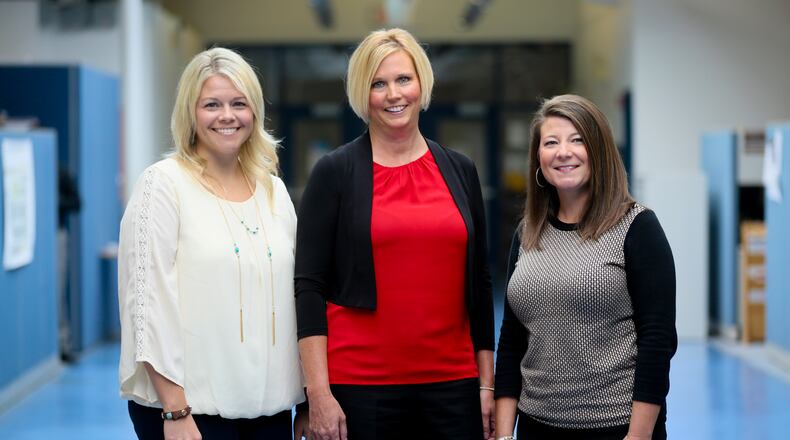“We congratulate Julie on her promotion to director,” Palmer said. “She has worked her way up through the ranks and with that comes respect from the workers. She also has an understanding of the workers needs from their leadership and knows what the case workers need to do their jobs.”
Just four years ago, after then Executive Director Jerome Kearns — who died suddenly just before Christmas in 2016 — declared Children Services broken and vowed to fix it, the social workers, lead by Palmer, contacted the Journal-News to tell their side of the story. They said morale was in the basement, caseloads unbearable, turnover paralyzing and leadership out of touch and uninterested in their opinions, things that had been a problem for years.
RELATED: Butler County Children Services to undergo overhaul
Management and the union at that time were also locked in a nasty contract negotiation that included several complaints — from both sides — to the state labor relations board and a three-week strike.
The overhaul included a series of meetings with community groups that touch Children Services, like groups of former clients, foster children and families, law enforcement, social service agencies, the social workers and faith-based organizations.
BCCS has evolved since then to an agency that is more focused on trying to help families keep their kids, than pulling them apart because children were deemed unsafe.
County Adminstrator Charlie Young said the culture change — helping parents overcome the barriers that caused them to lose their children in the first place — has been successful.
“This (is a) family centric wraparound approach that we’ve taken, to try to address not just the security of the child but the wellbeing of everyone around that child,” he said. “So we can minimize our direct involvement and allow the caregivers to be better at giving care and to allow them to function without us being a part of the equation.”
Probably the largest contributor to the transformation has been a new case-flow protocol.
The model uses a wrap-around approach to help parents safely keep their children at home. The program — which utilizes a team approach of addressing various needs a family has — provides that the social worker in charge of the case would have six months to work with the family. If the family fails to follow the services and directions given, the case would move on to another case worker for more intense attention before a decision is made to permanently remove a child.
And it’s not just county leaders who are praising the agency. An independent research report released in 2016 deemed the overhaul a success. The study writers noted the new model the agency adopted was the best course.
MORE: Butler County family drug court triples its docket
“The results of this study combined with current research add to the ‘superiority of this model,’” the report reads. “This study showed that stronger alliances were associated with lower rates of child removal from the home, as well as higher rates of family reunification and suggested that a better working alliance may lead to a lower need for ongoing services.”
In the past couple years the agency has also reinstated the Family Preservation Program — one that was dissolved due to budget constraints in 2011 — and family drug court, to address the scourge of the heroin epidemic.
Children in the agency’s custody reached a 10-year high in July of 2013, with about 500 youths in the county’s care, and a low of 369 in January last year. There are currently 393 children in the system, however Gilbert said those counts can be deceiving because they must count children, even if they are only there for a day. Given the number of children they have to remove because of the heroin epidemic, she said their numbers show a positive picture, unlike other county’s fighting the epidemic.
“We have been able to reduce the number of children entering foster care by 26.5 percent since 2013, which is something that has made us very proud,” Gilbert said. “Especially at a time when other counties are experiencing quite the opposite.”
From the union’s perspective, Palmer said there is still the perennial problem of turnover at the agency, which directly impacts their ability to do their jobs. As experienced workers leave, they are usually replaced by rookies who need time to get up to speed, putting the burden on the veterans on staff.
The turnover rate was at a high of 30.5 percent in 2005, a low of 6.8 percent in 2010 and around 16 percent last year.
“In the last 25 years we have gone through at least 10 directors and each one walks in the door with the belief that they are going to ‘turn things around with their new ideas.’ Often what they have done is turn this place upside down,” Palmer said. “It is during these times that we have lost good employees. It has not been any different over the last few years with changes in the way we manage cases.”
The county agreed to eliminate the lowest paying rung on the social worker pay scale in the recently ratified union contract, to be able to attract more experienced workers who might stay around longer with higher pay, hopefully eliminating what’s known as the revolving door.
Butler County Commissioner Don Dixon said putting people at the helm who have worked for the agency is a move in the right direction.
“There were a lot of smart people trying to run it but that’s a very difficult agency to run,” he said. “You almost have to really grow up in the system. You literally have to work there, you have to really do it, because you’re dealing with real people, people’s lives. You can have all the theories you want but in reality it only works a couple different way.”
About the Author
